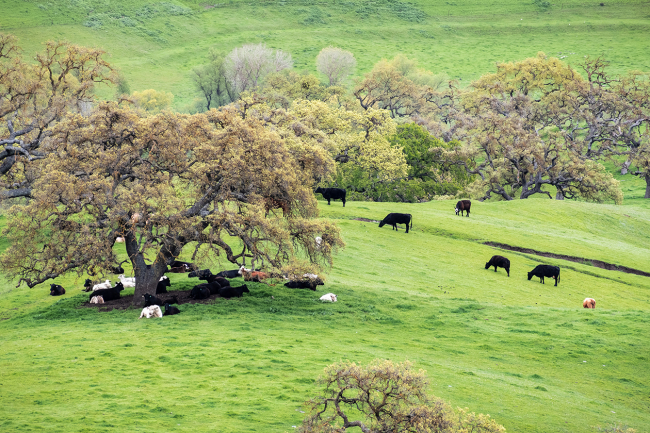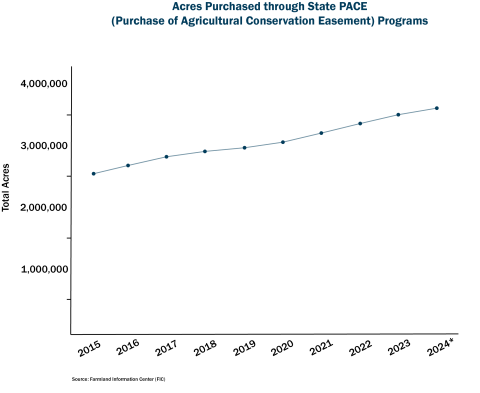BLOG
Maximizing the Value of Farm and Ranch Operations through 1031 Exchange Tax Deferral

1031 Exchange Eligible Ag Land in America
By definition, all Ag land is eligible for a 1031 exchange. Ag land includes pastureland, cropland, woodland, other land types and any improvements situated on or appurtenances to the land. In 2022, Ag land in the United States totaled 893 million acres, a decrease of 22 million acres from 2012. Total Ag land decreased 14.5 million acres from 2012 to 2017, double the rate of decrease compared to the previous 5-year period in which Ag land decreased 7.5 million acres from 2007 to 2012.
With an average price per acre over the 10-year span of $1348/acre, that equates to a total of $29.6 Billion dollars in sales of Ag land that would have been eligible for a 1031 exchange and which would have resulted in a conservative $11.8 Billion in tax deferrals based on the four levels of tax deferral associated with a 1031 exchange.
What is happening to Ag Land?
There are a variety of factors contributing to the decrease in Ag land over the last decade. Some of the most common reasons landowners are selling Ag land include:
- The Aging Producer/Landowner: 82% of principal operators of Ag land are 55+ years old and 38% of all Ag land is intended to be sold within the next 5-years.
- Encroaching Development: The main drivers of land conversion in the last decade were low-density residential areas, urban developments, and energy production.
- Increased Conservation Efforts: In 2021, the America the Beautiful initiative was introduced to conserve 30% of American land by 2030.
Regardless of the reason or motivation, a profit from the sale of land creates a likely sizeable taxable event for the landowner. A 1031 exchange provides tax deferral to the landowners of Ag land upon the sale, which is often indefinite if the property is held until death and passed onto heirs.
The Future of Ag Land in America
In the coming years, the transfer of Ag land will continue. According to the 2014 Tenure, Ownership and Transition of Agricultural Land Survey conducted by the USDA, 38% of principal Ag land operators intend to sell their land, which equates to roughly $236.3 Billion dollars in 1031 exchange Value, and approximately $94.5 Billion in associated taxes due without a 1031 exchange.
From 2015 to 2023 a total of 27.3 million total acres were protected through state PACE (Purchase of Agricultural Conservation Easement) programs alone, with an average annual increase of 4%. If historical trends remain consistent, that is an estimated 3.6 million acres will enter Conservation Easements in 2024 through state PACE programs alone. With the 2023 average price per acre of pastureland at $1760, that is roughly $2.2 Billion in potential exchange value for land entered into Conservation Easements. It is important to note that most conveyances of Conservations Easements for Ag land by landowners will allow the sale price of the Conservation Easements to be used to acquire other real property interests in a 1031 exchange.

Finally, the development of land will continue to impact agribusiness property into the future. From 2001 to 2016, 2,000 acres per day of Ag land was lost or developed. If that trend continues by 2040 an additional 18.4 million acres of Ag land will be converted into urban and rural developments triggering taxable events for the property owners of the Ag land sold. 1031 exchanges provide owners of Ag land the ability to make the right decisions for the future of their land without the tax consequences of the real estate transaction.
Unique Considerations for Agribusiness Property in a 1031 Exchange
While tax deferral with a 1031 exchange is not unique to agribusiness land, there are some unique considerations for owners of agribusiness property to be aware of to ensure they are getting the fullest extent of tax deferral possible under IRC Section 1031.
Improvements to Land
Additional guidance was provided in the 2020 Treasury Regulations regarding what can be eligible for 1031 exchange treatment outside of the traditional view of real property. The regulations state that to be part of real property, improvements to land must be permanently affixed. Affixation is considered permanent if it is reasonably expected to last indefinitely based on all the facts and circumstances. Ask the following questions to help determine whether the improvement qualifies as real property:
- How is it affixed to the real property?
- Was it designed to be removed or remain in place?
- What damage would removal cause to the improvement or real estate?
- What time and expense would be associated with removal?
- Is it documented by a fixture filing under state law?
Some common agribusiness examples of improvements to land that qualify for 1031 exchange treatment include:
- Center pivot irrigation systems
- Fencing and livestock handling facilities
- Wells, water lines and other water developments
- Septic systems
- Streambank preservation and erosion control structures
- Foundations
- Shops and Outbuildings including grain storage facilities
Intangible Real Property Interests
Similar to improvements to land, there are additional interests that are deemed as real property for 1031 exchange purposes and as a result an Exchanger can receive tax deferral for transactions involving the specific interests.
Some of the most common types of like-kind intangible real property associated with agribusiness real estate transaction include:
- Perpetual Easements: Some of the most popular easements include Conservation Easements, Drainage Easements, Pipelines, Solar, Wind, and Billboards;
- Water and ditch rights and oil, gas and mineral rights;
- Leases and Permits: Federal or state grazing permits, special land use permits for cell tower or wind and solar farms
There are many additional like-kind real property interests that are eligible for 1031 exchange treatment, as well.
Mixed-Use Properties
It is not uncommon for an agribusiness property to be mixed-used, meaning that while a portion of it is used for business or investment use, the remainder might be used for personal use, such as a primary residence. For example, a 100-acre plot that includes 95 acres of farmland and 5 acres which includes a primary residence.
Since only business or investment use property qualifies for a 1031 exchange, the personal use portion of a mixed-use property must be excluded from the total 1031 exchange value. Section 121 does however allow the property owner to exclude up to $250,000 (or $500,000 if married and filing jointly) on the gain of the sale of a primary residence which could provide full or partial tax deferral on the primary residence portion of the transaction. A 1031 exchange could be used for the remainder property achieving full tax deferral.
In conclusion, Agribusiness land will continue to be the subject of real estate transactions for a variety of reasons and without the proper knowledge and education, landowners could be subject to paying upwards of 40% of their land sale proceeds in taxes without a 1031 exchange.
It is important for a landowner to understand all of their options prior to entering into a real estate transaction and our dedicated team of 1031 Exchange Land experts are available to educate and consult Agribusiness property owners to help them maximize the value of their land, that in many cases, has been passed on generation to generation.
The material in this blog is presented for informational purposes only. The information presented is not investment, legal, tax or compliance advice. Accruit performs the duties of a Qualified Intermediary, and as such does not offer or sell investments or provide investment, legal, or tax advice.

